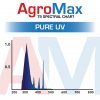Chip Green
Well-Known Member
Well, I care not if the "LUX" is actually correct, its just a constant to measure against. Now at least I know where to draw the line.
Same should apply to an app LUX reading.
I did one run where I packed 15 strips at 700ma on a 2x2 frame, was getting 70K+ LUX at 8", saw no noticeable advantage over the 50K zone, in fact sorta lost yield. due to smaller footprint.....
Same should apply to an app LUX reading.
I did one run where I packed 15 strips at 700ma on a 2x2 frame, was getting 70K+ LUX at 8", saw no noticeable advantage over the 50K zone, in fact sorta lost yield. due to smaller footprint.....





